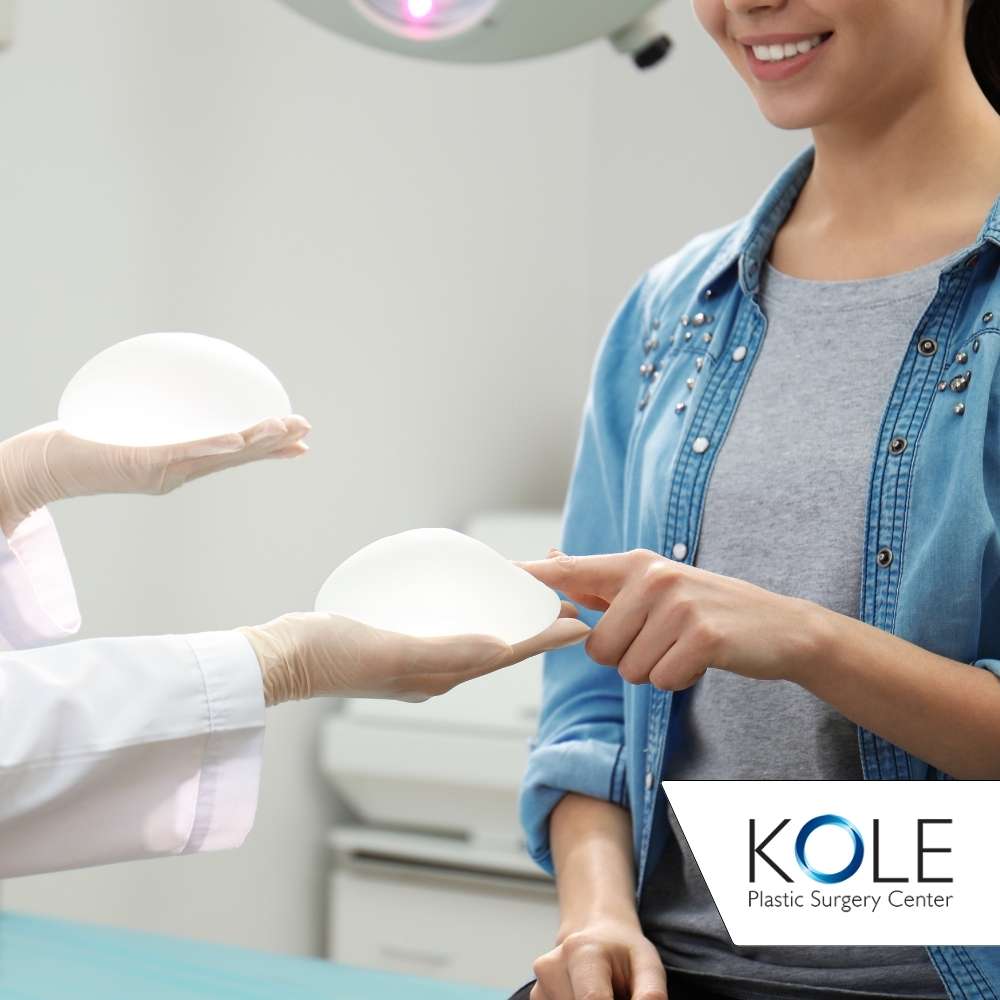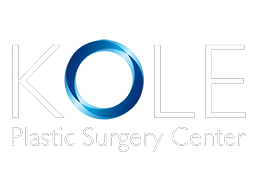I’m Dr. Edward Kole, a board-certified plastic surgeon at The Kole Plastic Surgery Center. Since I have performed thousands of breast procedures, I want to provide you with a comprehensive understanding of breast augmentation procedures. It’s important to have all the information you need before making a decision about undergoing this particular cosmetic surgery.
Understanding Breast Augmentation
When it comes to breast augmentation, there is a lot to learn and understand. This surgical procedure is designed to enhance the size and shape of the breasts through the insertion of implants. But what exactly does that mean? Let’s dive deeper into the world of breast augmentation to gain a better understanding.
Definition and Purpose of Breast Augmentation
At its core, breast augmentation is a surgical procedure that aims to enhance the size and shape of the breasts. This is achieved by inserting implants, which can be filled with either saline or silicone gel, into the breast tissue. The purpose of breast augmentation can vary from person to person, but some common reasons include:
- Enhancing the fullness and projection of the breasts: Many individuals seek breast augmentation to achieve a fuller and more projected breast appearance. This can help create a more balanced and proportional figure.
- Restoring breast volume after weight loss or pregnancy: Significant weight loss or pregnancy can cause the breasts to lose volume and appear deflated. Breast augmentation can help restore the lost volume, giving the breasts a more youthful and rejuvenated look.
- Balancing breast asymmetry: It’s not uncommon for one breast to be slightly larger or shaped differently than the other. Breast augmentation can help correct this asymmetry, creating a more symmetrical and harmonious breast appearance.
- Boosting self-confidence and improving body image: For many individuals, breast augmentation is a way to enhance their self-confidence and improve their body image. Feeling more comfortable and satisfied with their breasts can have a positive impact on overall well-being.
The Different Types of Breast Augmentation Procedures
Now that we have a better understanding of the purpose behind breast augmentation, let’s explore the different types of procedures available today. Each approach offers unique benefits and considerations, allowing individuals to choose the option that best suits their needs and preferences. Here are some of the most common types of breast augmentation procedures:
- Saline-filled implants: These implants are filled with a sterile salt-water solution. They provide a firm and uniform shape to the breasts, resulting in a natural-looking appearance. Saline-filled implants are often adjustable, allowing for minor modifications in size during surgery.
- Silicone gel-filled implants: These implants contain a cohesive silicone gel that closely resembles the feel of natural breast tissue. Silicone gel-filled implants are known for their softness and ability to provide a more natural look and feel. They come in various shapes and sizes to accommodate different body types and desired outcomes.
- Gummy bear implants: These implants are filled with a highly cohesive silicone gel that maintains its shape even if the implant shell is broken. The gel inside these implants has a thicker consistency, giving them a firmer feel. Gummy bear implants are often preferred for their durability and ability to retain their shape over time.
- Autologous fat transfer: This procedure involves using your own fat cells from other parts of your body to enhance your breasts. Fat is harvested through liposuction from areas like the abdomen or thighs and then injected into the breasts. Autologous fat transfer offers a natural and subtle enhancement, as it uses your body’s own tissue.
Each type of breast augmentation procedure has its own advantages and considerations. It’s important to consult with a qualified plastic surgeon to determine which option is best suited for your unique goals and circumstances.
Preparing for Your Breast Augmentation
Initial Consultation: What to Expect
During your initial consultation, I will discuss your desired outcome and perform a thorough examination. We will talk about the different options available to you and determine the best approach for your unique needs. I will also explain all the risks and potential complications associated with the procedure.
During the consultation, we will take the time to address any concerns or questions you may have. It is important to have open and honest communication so that we can ensure you are fully informed and comfortable with your decision. We will also use our 3 dimensional breast imaging system to show you in real time what different size breast implants will look on your body so you can make the best decision for your desired outcome.
I will also provide you with detailed information about the surgery itself, including the type of anesthesia that will be used and the expected recovery time. This will help you mentally and physically prepare for the procedure.
Choosing the Right Surgeon for You
It is crucial to choose a qualified and experienced plastic surgeon for your breast augmentation procedure. Look for a surgeon who is board-certified and has a proven track record of successful surgeries. Take the time to ask for before and after photos and read testimonials from previous patients.
When selecting a surgeon, it is important to consider their level of expertise and specialization in breast augmentation. A surgeon who specializes in this procedure will have a deep understanding of the intricacies and nuances involved, ensuring optimal results.
In addition to their qualifications, it is also important to choose a surgeon with whom you feel comfortable and trust. Building a strong rapport with your surgeon will help alleviate any anxiety or concerns you may have, allowing for a smoother and more positive surgical experience.
Dr. Kole will personally meet with you and help you decide the best breast augmentation options.
Pre-Procedure Checklist
Prior to your breast augmentation surgery, there are some important steps to follow:
- Stop smoking at least one month before the procedure to reduce the risk of complications. Smoking can impair the healing process and increase the risk of infection.
- Arrange for someone to drive you home after the surgery, as you may experience drowsiness from anesthesia. It is important to have a responsible adult accompany you to ensure your safety.
- Avoid taking any blood-thinning medications or herbal supplements that can increase bleeding during surgery. These include aspirin, ibuprofen, and certain vitamins and herbal remedies. It is important to disclose all medications and supplements you are currently taking to Dr. Kole.
- Follow any specific instructions provided by Dr. Kole regarding fasting before the procedure. This may include refraining from eating or drinking for a certain period of time prior to surgery to reduce the risk of complications during anesthesia and specific instructions about exercise and medication use.
It is important to adhere to these guidelines to ensure the best possible outcome and minimize any potential risks. Dr. Kole will provide you with a comprehensive pre-procedure checklist to follow, tailored to your specific needs and medical history.
The Breast Augmentation Procedure
Step-by-Step Process of Breast Augmentation
The breast augmentation procedure typically involves the following steps:
- Administering anesthesia to ensure your comfort during the surgery. This is usually general anesthesia administered by a Board-Certified Anesthesiologist.
- Creating incisions in carefully chosen locations, such as around the areola, under the breast crease, or in the armpit.
- Placing the chosen implants either under or over the chest muscle, depending on your specific goals and anatomy.
- Closing the incisions with sutures and applying dressings or surgical tape to promote proper healing.
- Giving you specific post operative instructions and scheduled post-operative visits.
Anesthesia and Its Role in the Procedure
Anesthesia plays a vital role in ensuring your comfort and safety during the breast augmentation procedure. The type of anesthesia used will depend on various factors, including your overall health, the extent of the surgery, and your personal preferences. During your consultation, we will discuss which option is best suited for you.
Post-Procedure Care and Recovery
Immediate Aftercare Post-Surgery
After your breast augmentation surgery, it is important to follow these post-operative care instructions:
- Take your prescribed pain medications directed to manage any discomfort.
- Wear a supportive surgical bra to aid in the healing process and minimize swelling.
- Avoid heavy lifting and strenuous activities for the first few weeks to allow your body to heal properly.
- Attend follow-up appointments with Dr. Kole to monitor your progress and address any concerns.
Long-Term Care and Maintenance
Breast augmentation is a long-term investment in your appearance. To ensure the best results and longevity of your implants, it is important to:
- Undergo regular breast examinations and mammograms as recommended by your primary healthcare provider.
- Inform your healthcare professionals about your breast implants before any medical procedures or screenings.
- Consider the need for future replacement or revision surgery, as breast implants are not meant to last a lifetime.
Potential Risks and Complications
Common Side Effects of Breast Augmentation
While breast augmentation surgery is generally safe, there are potential risks and complications you should be aware of. These may include:
- Pain and discomfort
- Swelling and bruising
- Infection
- Scarring
- Implant rupture or leakage
How to Handle Potential Complications
If you experience any unusual or concerning symptoms following your breast augmentation surgery, it is important to contact your surgeon immediately. Prompt communication is key to addressing any potential complications and ensuring a successful outcome.
In conclusion, breast augmentation can be a life-changing procedure for many women. However, it is essential to gather all the necessary information and make an informed decision. If you are considering breast augmentation, I encourage you to schedule a consultation with me at The Kole Plastic Surgery Center by calling 215-315-7655. Together, we can discuss your goals and create a personalized plan to help you achieve the breasts you desire.
Remember, knowledge is power, and I am here to guide you every step of the way.






